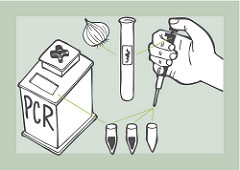Aggregated News

David Ishee’s plan was simple, if not exactly free of complication. From the shed that functions as his laboratory in rural Mississippi, he hoped to use genetic engineering to rid dogs of the types of terrible disorders caused by decades of high-end breeding.
Now, on top of the obvious scientific hurdles, Ishee has a new challenge to contend with: the US Food and Drug Administration (FDA).
Ishee is a biohacker, one among a growing number of do-it-yourself scientists that the US government is having an increasingly difficult time figuring out what to do with.
Since the DIY bio community first developed in the early naughts, it has largely avoided government regulation. But in 2017, cheaper equipment and simpler genetic engineering technologies mean that garage scientists can dream much bigger than simply turning yellow yeast red. We now live in a world where anyone can order custom DNA sequences on the internet to tinker with in their home. And the rules that govern genetic engineering today were not written with the foresight that it would one day be possible for...



